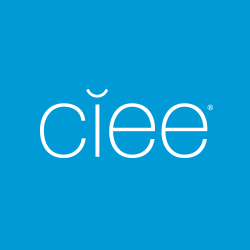To H-1B or Not to H-1B, That is the $100K Question
A guide for U.S. employers deciding between the H-1B and J-1 visa when hiring international talent
A 1,900% to 4,900% increase.
That’s how much H-1B visa costs surged when President Trump introduced a $100,000 petition fee for skilled foreign workers seeking to enter the U.S. (Previously, applicants paid just $2,000 to $5,000.)
It adds up when some of the country’s largest organizations depend on these workers to keep operations going. In FY25, Amazon had more than 10,000 of these staff members on payroll, while the rest of the top 25 companies using H-1Bs employed between 1,100 and 5,500. (That includes names like Apple, Google, Deloitte, Ernst & Young, and Fidelity, to name a few.)
Some businesses may be able to meet that fee increase, but many others will need to rethink their hiring strategies when it comes to skilled workers.
That’s where another visa – the J-1 visa through BridgeUSA – comes in.
Consider this:
- The H-1B visa is a non-immigrant visa that allows U.S. companies to employ foreign workers in specialty occupations that require theoretical or technical expertise.
- The J-1 visa is a non-immigrant visa for individuals who are approved to participate in work- and study-based exchange visitor programs in the U.S.
If they sound like they have similarities, it's because they do.
H-1B Visa and J-1 Visa Comparison
Learn more about what the J-1 visa can offer you if hiring H-1B employees is no longer a viable option for your company.
| H-1B Visa for Specialty Occupations | J-1 Visa for Professional Exchanges |
| Duration | Up to 3 years. May be extended for an additional 3 years. | Intern, up to 12 months. Trainee, up to 18 months. Research Scholar, up to 5 years. Short-Term Scholar, up to 6 months. Professor, up to 5 years. Specialist, up to 12 months. |
| Petition fees | $100,000 | $0 |
| Sponsors | Employer handles the paperwork. | Sponsor organization handles the paperwork. |
| Average standard visa processing time | 8-10 months | 6-12 weeks |
| Common industries |
|
|
J-1 Visa Opportunities Through the BridgeUSA Program
International talent who come to the U.S. on a J-1 visa through the BridgeUSA program can offer organizations access to a broad range of qualified candidates. Discover more about some the professional exchange programs available and how you could build a mutually beneficial relationship with participants:
BridgeUSA Intern
Interns on a J-1 visa are either enrolled in a postsecondary institution or have graduated no more than 12 months prior to their start date. They’ve picked up the latest industry learning from real-world experts at their university, are excited to boost their resume, and are motivated to develop their skill set.
BridgeUSA Trainee
Trainees on a J-1 visa may have either a degree or certificate from an academic institution and at least one year of related work experience or a minimum of five years of related work experience in their training field. These rising professionals are seeking exposure to the American workforce, so they can bring their expanded knowledge back to their home country.
BridgeUSA Research Scholar
Research Scholars on a J-1 visa have a minimum of a bachelor’s degree – many are post-docs – and arrive in the U.S. with the primary purpose of conducting research. They may work at a variety of organizations, such as academic institutions, research labs, corporate R&D centers, and more.
BridgeUSA Short-Term Scholar
Short-Term Scholars on a J-1 visa also have a minimum of a bachelor’s - many have advanced degrees – and are here for a shorter period than Research Scholars. They may take part in research projects, teach a semester at a college, or lecture, consult, or observe other related activities.
BridgeUSA Specialist
Specialists on a J-1 visa are recognized as international experts in a field of specialized knowledge or skill – in any industry. They want to spend time in the U.S. so that they may exchange knowledge and share ideas, as well as observe, consult, and/or demonstrate this expertise with new colleagues. And American host organizations welcome these specialists for their valuable expertise and the fresh perspectives that they bring, helping to spark innovation within their own company.
BridgeUSA Professor
Professors on a J-1 visa will either teach, lecture, research, or consult in a university, research facility, library, or similar type of institution.
Next Steps for Employers
Interested in bringing international talent to your organization without the $100K petition fee? The J-1 visa through the U.S. Department of State’s BridgeUSA program is the cost-effective and hassle-free solution for forward-thinking employers.
To get started, speak with a CIEE representative after you fill out the contact form.
CIEE will guide you through every step – from connecting you with pre-vetted candidates to handling the paperwork – so you can focus on welcoming your new international hire.
Explore CIEE BridgeUSA Intern and Trainee programs or the CIEE BridgeUSA Researcher, Scholars, Professors, and Specialists page to simplify the process.

